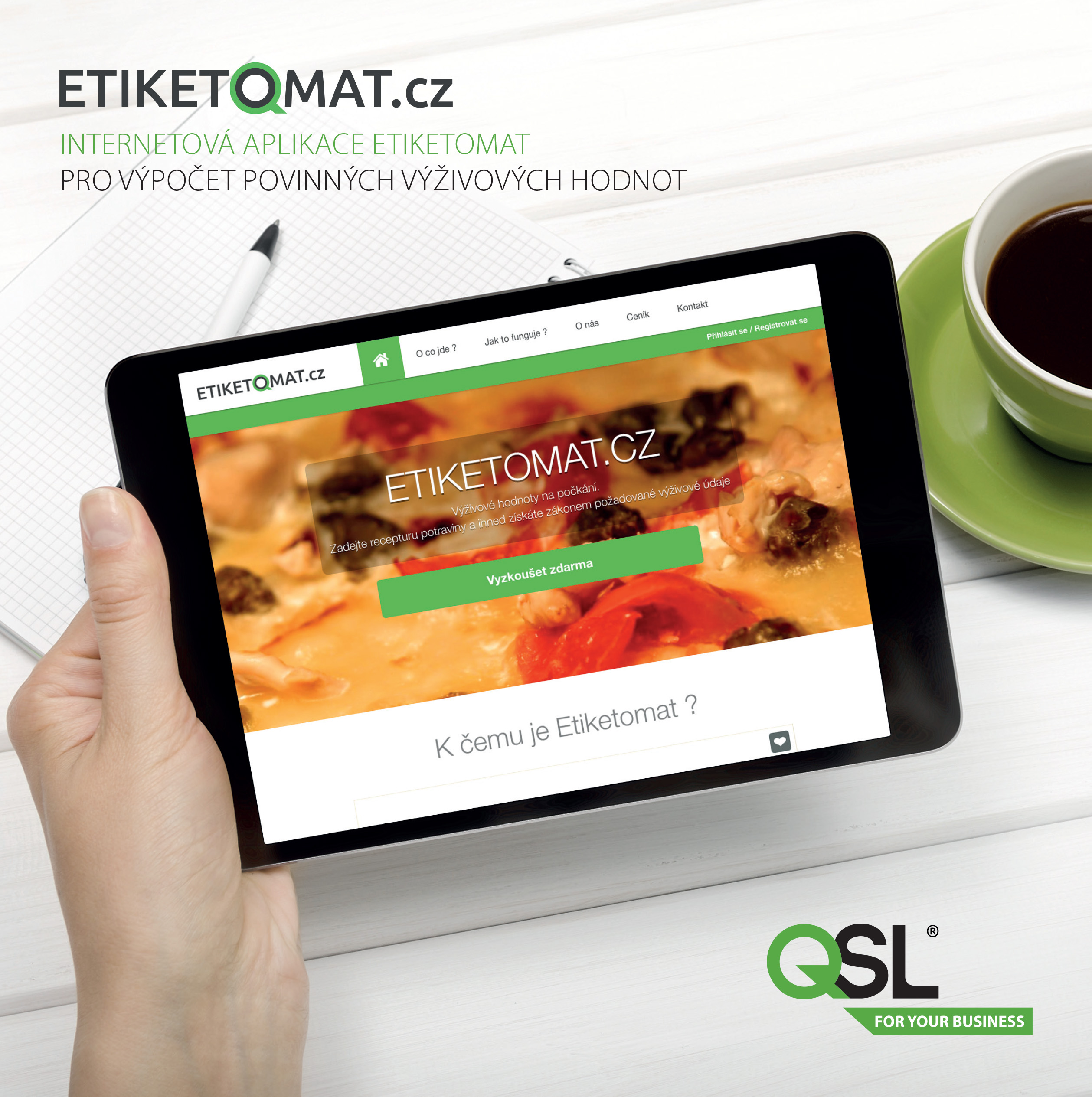According to the World Health Organization, in 2016 even 26 % of world population were obese and 62 % were overweight. It is caused mainly by current population's lifestyle, particularly by improper nutrition and insufficient moving. However, currently there are also more and more consumers who are interested in nutritional value of food. They want to have an option to choose such food and beverages that are in compliance with their conviction on balanced nutrition and that support their health. Several years ago, the European Commission (in cooperation with food producers) has reacted on consumers'need by the decision on stating nutrition information on food packaging. Currently, nutrition information is a mandatory part of most food. In compliance with the Regulation (EU) No. 1169/2011, 7 particular nutrition information – energy, fats, saturated fatty acids, saccharides, sugar, protein and salt – must be indicated on all food packaging from 13thDecember 2016. The information, as per Regulation (EU) No. 1169/2011, can be gained by laboratory analysis that is usually time and finance consuming or by calculation that can be complicated and lengthy. That is why QSL has developed innovative application Etiketomat, by which 7 above mentioned food nutrition data can be calculated. QSL experts in cooperation with many technical institutions (e.g. VŠCHT Praha, Svaz pekařů a cukrářů, ÚZEI) worked on development of this web application. Highly technical German publication Food Composition and Nutrition Tables (authors: Souci, Fachmann, Kraut) that was published by German Ministry of Agriculture in 2016 was also used indevelopment of the food database in Etiketomat.
Etiketomat service provides food producers with many benefits: i) certainty of correct calculation; ii) calculation in compliance with current legislation; iii) low price of calculation (roughly in hundreds of crowns) compared to laboratory analysis; iv) speed and easiness, with which the calculation can be done; v) Etiketomat food database compiles data of several verified nutrition databases (Czech, Slovak, Danish, English) so data of various sources are together in one place; vi) you do not have to send the recipe of your product, and thus the greatest secret of your company to any other third party but you calculate nutrition information yourself easilyand vii) easy availability of Etiketomat – it is a web application, where you just sign in, pay for your credit and you can start calculating.
In case customers do not wish to calculate nutrition information themselves, the service “Enter with No Concern” can be used and QSL experts will make the calculation. Calculation of nutrition data proceeds as follows: individual food (product) ingredients, their quantity and total weight loss that occurs during processing are entered in the application. Etiketomat then automatically calculates nutrition information based on the data saved in its database and the result is displayed in form of a clear table. It is fast, easy and reliable.
One year and a half after the obligation to state nutrition information on labels came into force, Etiketomat has beem used by 1117 producers and 3312 successful calculation have been done for them.
As other aspects in labelling of food, indication of nutrition information has still been developing, particularly as a reaction to nutrition state of world population and also to common consumers'needs. In the near future we can probably expect a change in the rules for indication of nutrition information (and their ingredients) in alcoholic beverages. Currently, in compliance with the Regulation No. 1169/2011 it applies that beverages with alcohol content exceeding 1.2 % do not need to state nutrition information (or their ingredients) on the label. However, some consumer organizations do not like this approach and the European Commission assumes that it will change in the future and that all alcoholic beverages will somehow be labelled with nutritional value data. Recently the producers of alcoholic beverages issued a draft how indication of nutrition information on their products should be like and this proposal will be reviewed by the European Commission.
Another news in the EU market in the sphere of nutrition labelling of food could be implementation of so called traffic lights of harmfulness that should make consumers'orientation in selecting suitable food, with regard to nutritional composition, easier. The concept of nutrition labelling (in the form of traffic lights) has been implemented in Great Britain and it is based on colour indication (green, amber and red) on food packaging depending on to what extent their ingredients (or sugar, fat, saturated fatty acids and salt contents) burden the organism (compliant/noncompliant with set limits). Five international food producers (Nestlé, Unilever, Mondelez, Pepsi Cola, Coca-Cola) that submitted their vision of traffic lights labelling to EU want to implement a similar concept of labelling all over Europe.
QSL is ready to react on possible changes and news in indicating nutrition information in food. For example in case of unified implementation of traffic lights of harmfulness, web application Etiketomat will be adjusted so that it is (after calculating nutrition information of given food) clearly evident, which of three groups (green, amber and green) given product falls within.
Do not hesitate to contact us, Etiketomat service is here for everyone who needs a reliable, easy and fast method for gaining nutrition information of food.
Team QSL


